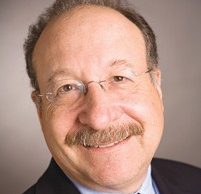The California Judicial Branch has zoomed in on a downtown Santa Barbara location where it plans to build a $152 million criminal courthouse, a massive project that would create an estimated 3,500 direct and indirect jobs in the area as the South County’s criminal and traffic court operations are consolidated under one roof.
The state court system is looking to purchase the property at 1025 Santa Barbara St. to build a 97,000-square-foot, eight-courtroom facility. Construction is slated to begin in early 2014, wrapping up by late 2015.
Approval for the project could set in motion a domino effect of building and reconstruction along the Figueroa Street corridor, already a major hub for financial and legal services firms. It could spark a retail and residential revival in an often overlooked corner of the city.
“Right downtown, right now, this is good news,” said Steve Cushman, president of the Santa Barbara Region Chamber of Commerce.
After spending more than a year scouting out potential spots in the city, the judicial branch picked the site, known as the Hayward property, as its top choice. While no formal purchase deal on the property has been struck yet, the California State Public Works Board approved it for site selection at its Dec. 13 meeting in Sacramento.
That allows the judicial branch to move forward with purchase negotiations and environmental impact studies, said Teresa Ruano, a spokeswoman for the Administrative Office of the Courts.
The judicial branch’s site selection policies require it to submit at least one alternate site for approval, she said; it will submit a portion of the property owned by the Metropolitan Transit District on Calle Real for selection approval in early 2011. Even so, the Santa Barbara Street property is the court system’s “preferred site,” she said.
And because California’s judicial branch, a state-level agency, would own the property, the project would not be subject to Santa Barbara’s notoriously tough approval and permitting process.
“Even so, what we do try to do is be a good neighbor,” Ruano said, adding that the project would still have to meet state environmental impact standards.
Under one roof
The new criminal courthouse received funding in March, when the State Public Works Board approved $5 billion from Senate Bill 1407 be allocated to renovate and build 41 California courthouses. The Santa Barbara project was ranked at the top of the list as an “immediate need.”
The $152 million project budget includes both the cost of the buying a site and construction. The facility would replace Santa Barbara’s current criminal courthouse on Figueroa Street and the jury services building on Santa Barbara Street. The replacement — which would have the court system vacating the two current locations — is needed to alleviate overcrowding and offer better security, according to the judicial branch.
The current Figueroa courthouse is in disrepair and would cost more to renovate and bring up to par than building a whole new location would cost, according to the judicial branch.
The 37,000-square-foot, three-story building was built in 1954 and underwent a county-funded remodel in 1990. But it’s overcrowded and not up to par with building and security standards, according to the judicial department, which cites unsecured judges chambers, lack of building code-compliant exits, and holding cells that are too small and too few as a few of the reasons to rebuild.
The judicial branch’s feasibility report tags the cost of revamping the existing criminal courthouse at $154.8 million – more than it’s expected to cost to buy a site and build a new building.
The Figueroa Street and jury services buildings will be vacated, although no formal announcement has been made as to their future beyond that.
The new courthouse would also co-locate jury services with the criminal courtrooms and would relieve the Santa Barbara County Courthouse on Anacapa Street of criminal proceedings. The open-air, Spanish Colonial-style courthouse — as much a tourist draw and historic landmark as a functioning government building — currently hosts two of the four courtrooms on the South Coast that are used for criminal trials.
But the Anacapa courthouse is “not safe for criminal court proceedings,” according to a judicial branch report, because it doesn’t have security screening at the entrance or in-custody holding cells. Currently, in-custody defendants are escorted to court from holding cells at the Figueroa courthouse across the street, even during days when downtown is bustling with tourists and shoppers.
There are still many moving parts to the proposed project, but it looks like the new courthouse will be constructed primarily on the 1.3-acre Hayward property.
Escrow is slated to close by September 2011, after which the design and planning process begins. Preliminary plans and completed drawings are expected to be in by September 2013, with construction finishing up by late 2015.
“We do try to accelerate those schedules,” Ruano said, adding that a purchase deal may well be completed earlier than expected next year.
“The Haywards and the court have not agreed to a price, but the Haywards have agreed that they’ll sell,” said Jerry Beaver, a commercial real estate broker representing the property’s owners.
How parking will work remains unclear. The new courthouse will require about 200 parking spots, but Ruano said that it’s too early in the process to have specific parking concepts nailed down. The new building may incorporate a parking structure into the courthouse site, or may look to acquire a separate downtown parking lot.
Economic impact: 3,500 jobs
Santa Barbara’s slow-growth attitude and relatively few undeveloped properties make ground-up construction in the city’s downtown area a novelty.
A project of this magnitude is exciting, say local business experts.
“I think it’s exciting, it’s great. I hope they move forward quickly,” Cushman said. He’s been with the chamber since 1990, the same year that Paseo Nuveo, the city’s large outdoor mall, was developed. The courthouse project would rank with the $150 million shopping center as one of the largest projects in Santa Barbara’s downtown core in recent decades.
The California Judicial Branch estimates that the courthouse will create 3,500 direct and indirect jobs over a five-year period.
Peter Rupert, the director of UC Santa Barbara’s Economic Forecast Project, said the sooner the project begins, the better for the local economy.
“The construction industry has taken a big hit,” he said. “Unemployment is pretty high in the construction industry right now, so when something like this comes along, it’s good news.”
Are you a subscriber? If not, sign up today for a four-week FREE trial or subscribe and receive the Book of Lists free with your purchase.






 Print
Print Email
Email

















